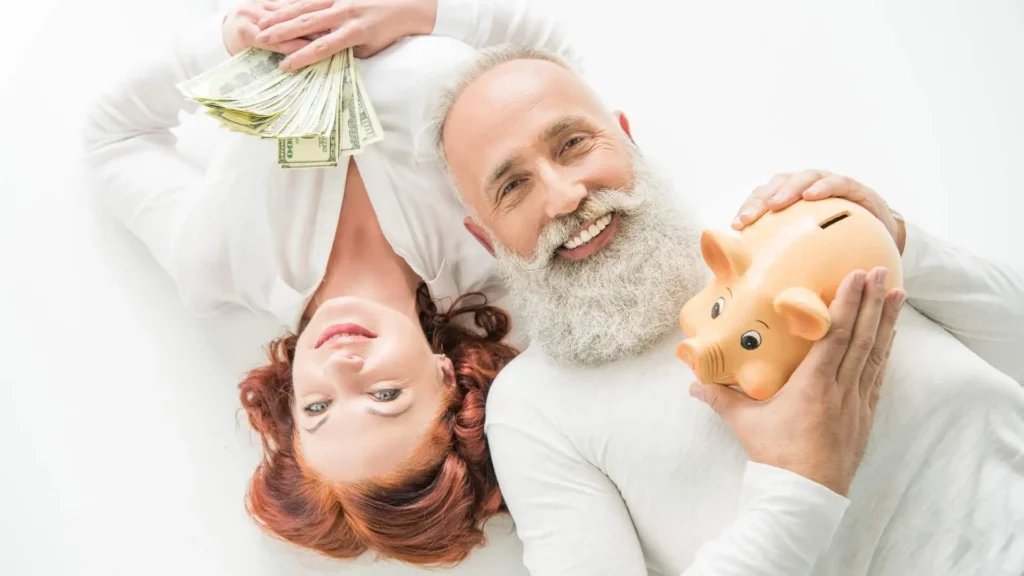Table of Contents
Have you ever purchased an item that you really didn’t require just to lift your spirits? If yes, then you are in good company. One of the major modern money traps is emotional spending, which is mainly caused by stress, boredom, or sadness. Minor purchases may look innocent, but in the long run, they can accumulate and become very big credit card payments and even be part of long-term debt.
Understanding the cause of emotional spending, how it results in financial pressure and the very practical methods to reclaim control are all things which greatly affect one’s financial well-being. We will elaborate on the psychological aspects of emotional spending, its relationship to borrowing money and provide advice to acquire self-control over spending habits.
What Is Emotional Spending?
Emotional spending is the term that describes a situation when the buyer’s emotions are primarily responsible for the purchase and not their genuine need. It is not about the transaction per se; it is about the reason for making a purchase. Many people resort to shopping as a way of dealing with their negative feelings and hence, looking for instant pleasure as a means of relieving stress, boredom, loneliness, or sadness.
Advertising and social media play an important role in this vice by promoting glamorous lifestyles, influencer endorsements, and advertisements that persuade even the most reluctant consumers that they are entitled to buy a particular product. Even the smallest of purchases done repeatedly can eventually lead to over $ 1,000 being charged on one’s credit card due to the high interest rates applied everyday. Accepting that emotional spending is not through necessity, but rather due to an emotional reaction, is the first step to overcoming the problem.
The Psychology Behind Emotional Spending
Our brains naturally want us to feel good for a short period, thus emotional spending has become a very normal way of getting through tough times. Knowing the triggers and the role of marketing can help us to better grasp the habits that lead to overspending and consequently to financial hardship.
The “Dopamine Hit” of Shopping
Shopping, one of the most common human activities, has the effect of releasing the so-called “pleasure chemical,” dopamine, in the brain. This provides temporary relief from the burden of negative feelings. The temporary feeling of being up comes after a purchase but is short-lived. The high is soon followed by the letdown of the regret once the reality of spending hits. Stretching this dopamine hit too much can easily change our little treats into a big and expensive habit that cuts our financial stability down.
Emotional Triggers That Drive Overspending
A range of emotional triggers can lead a person to buy unnecessary items. Stress from occupation or personal life might be one of the main triggers along with isolation, boredom, low self-esteem, and peer pressure. A good case in point is retail therapy which denotes a practice where a person indulges in shopping to feel good after a split, a bad day, or simply when they are emotionally drained. It is very important to recognize these triggers in order for you to stop the cycle before it gets too expensive.
The Role of Advertising and Social Media
The combination of contemporary marketing along with social media has a great impact on emotional spending. These sites not only display perfect lifestyles but also make it seem common to constantly buy and use phrases such as “treat yourself” or “you deserve this” that are really difficult to resist. This kind of emotional manipulation plays on people’s character traits of wanting everything instantly and tolerating no delays even in purchasing. It is not uncommon to plead that the buy is justified even when it puts a strain on the budget.
How Emotional Spending Turns Into Debt
Even the smallest and most frequent purchases can lead to considerable debt very fast, especially when using credit cards and not being able to distinguish between needs and wants or recognizing patterns of overspending is an important step in avoiding the development of long-term financial difficulties.
Small Purchases Add Up Quickly
It is generally the case that the daily spending of a few dollars does not seem to be very significant, but in the long run, it is just that – a large expenditure. Assuming, for instance, that one spends just $20 daily on minor things such as coffee, snacks, or online deals, that sums up to over $600 per month which is quite substantial. The same spending habit, when done with a high-interest credit card, can soon result in heavy debt that can be quite difficult to manage. Therefore, it is important to comprehend how these small, regular expenditures are tying up funds for a person.
Overspending Beyond Income
People who are driven by emotions when buying often do not know where to draw the line between the indispensable and what is desirable. If a person’s spending exceeds his/her income, that person will resort to using credit cards, personal loans, or overdraft protection to sustain his/her lifestyle. This behavior leads to the rapid accumulation of debts, particularly when the debts are subjected to interest and late fees, thus forming a circle of financial weak points.
The Credit Card Trap
Credit cards facilitate emotional spending as they let the customer delay the pain of the payment. Minimum payment, in this case, might generate the false belief that the debt is manageable, yet the high borrowing costs are working against the borrower. For instance, if one makes a $500 emotional purchase and does not pay it back at once, the amount owed might grow to $600 or even more in just a few months, thus portraying the hidden cost of “buy now, pay later” mindset.
Debt Snowball Effect
Recurring emotional spending usually leads to a debt snowball effect where a person uses one credit form to settle another. This can be illustrated by a $1,000 purchase which within months due to interest and late fees might become $1,300 or even more. This vicious cycle comes with financial stress, reduces available spending, and intensifies the negative emotional triggers that initially drove spending.
The Hidden Costs of Emotional Spending
Emotional spending, beyond the immediate financial strain, has hidden consequences such as anxiety, damaged credit, and stressed relationships. Recognizing these effects emphasizes the need to tackle emotional expenditures for the financial and emotional wellness of the whole person.
Financial Stress and Anxiety
Emotional spending leads to financial stress and anxiety that are always present. Guilt over overspending, concern about bills, and instability in the economy can all be powerful if not controlled. People repeatedly go through the process of spending, regretting, and stressing until they find relief through another round of spending which ultimately makes the problem even worse.
Read: Redefining Retail Therapy: Mindful Alternatives to Stress Shopping
Damaged Credit Score
The after-effects of late or missed payments due to excessive spending are that an individual’s credit rating goes down. When one’s credit score is lower, one pays more for borrowing and has fewer opportunities in the financial market that means inaccessibility to loans, mortgages, and other important financial resources. The long-term repercussions could be in the form of hard-to-rent apartments, higher insurance, and in some cases, employment issues.
Impact on Relationships and Self-Worth
Emotional spending can cause discord in relationships because of the financial stress it brings. Money arguments are among the top reasons that cause couples to have conflicts. In addition to the impacts on relationships, emotional overspending can also significantly affect a person’s self-worth. Guilt and shame that are associated with negative spending behaviors are the ones reinforcing the feelings. Thus, knowing this psychological and relational aspect of the situation is crucial for having a good and lasting financial health.
Identifying Emotional Spending Patterns
The emotional spending control process begins with uncovering the situations that are characterized by buying under the influence of emotions rather than through rational decisions. Some of the most prevalent signals are shopping for fun or to get over bad moods, feeling uneasy if one doesn’t buy anything, and keeping purchases from one’s relatives or friends. One can use a spending journal or a tracking app to discover such patterns, thus, they will be able to foresee and lessen the impact of triggers that lead to debt. The knowledge of one’s emotional spending habits gives them the power to stop such purchases before they get out of control.
How to Break Free From Emotional Spending
To stop emotional spending from recurring, one must apply quite a few techniques and show consistency in habits. Practical steps like setting up a payment pause, making budgets, and even alternatives can go as far as helping one take back control and eventually develop financial discipline that lasts.
Step 1 — Pause Before Every Purchase
The so-called “24-hour rule” serves as a way to postpone the buys made with emotion and time to think about whether a person actually needs the product or if it is just an emotional need. E.g., “Do I really need it, or it’s just a way of me feeling good?” This thought process encourages conscious spending and thus prevents the buyer from making unneeded purchases.
Step 2 — Set Emotional Triggers in Awareness Mode
Combining mood tracking with financial outgoings can disclose some hidden trends. For instance, if one realizes that after a stressful workday or on a lonely weekend online shopping becomes the only source of distraction, it means that such situations have been identified as emotional triggers. More importantly, through the identification of those triggers, a person can always be ready with alternatives during their usual moments of impulsive spending.
Step 3 — Create a Guilt-Free Fun Budget
A little allowance for one’s happiness keeps the door for binge-spending later on less opened. This method shares the load of being strict with one’s spending and rewarding oneself thus giving the opportunity for people to treat themselves without upsetting their financial goals for the long term. The way of putting aside money for emotional purchases that is controlled reduces the mental strain which is one of the causes of buying things on the spot.
Step 4 — Switch to Cash or Debit
The use of cash increases one’s awareness of how much money is being spent. When a person is handing over cash that person usually feels the loss more and as a result, impulse buying is reduced. The use of debit cards or cash can very well distinguish between emotional and financial purchases by restricting them to a certain amount that one has in actual funds.
Step 5 — Replace Shopping With Positive Alternatives
Non-monetary strategies, such as engaging in physical activities, writing down thoughts, going out with friends, or pursuing hobbies, can fill the void of one’s emotional need without costing him/her anything.By addressing the underlying emotion directly, individuals can reduce the urge to purchase impulsively while maintaining a healthier mental state.
Step 6 — Automate Financial Protection
The immediate automation of savings transfers after payday takes away the disposable money that is easily spent and is likely to be of an emotional nature. The use of budgeting applications and AI-powered systems has the advantage of sending notifications once the user’s expenditures go beyond the levels they have specified. This situation leaves the user with no chance to react emotionally to the outcome of financial decisions and helps to establish a uniformity in financial management.
Building a Healthier Relationship With Money
Picking up on the spending habits that are intentional gradually strengthens the financial well-being. When purchases are connected to long-term satisfaction instead of short-term pleasure, it encourages the practice of mindful decision-making. Early locating of emotional triggers and then redirecting the energy to productive activities stop the spending from causing loss of financial goals. Financial liberation is not through denial but is instead through getting the upper hand, making thoughtful decisions that are in line with one’s values rather than temporary feelings.
Role of Technology and AI in Managing Emotional Spending
The role of technology could be a very important one in limiting the occurrence of emotional spending. The use of smart applications can facilitate the tracking of purchases, draw attention to the spending categories that are risky, and uncover the patterns that may have been unnoticed before. A tool powered by AI can highlight among other things the increase in expenditure on Dining out or subscriptions. The setting up of automations and notifications can help in removing emotional aspects from daily decisions thus allowing them to keep up with the budget and be financially stable. Technology is like a guide and a protector at the same time, giving the users the ability to take back control of their money.
Conclusion — Emotions Are Human, But Debt Doesn’t Have to Be
It is human to spend emotionally, however, such spending does not have to lead one into debt. Being alert to emotional triggers, using the technique of slow decision making, and employing practical actions like budgeting, monitoring, and conscious spending pave the way to financial freedom.
Consider using Beem to spend, save, plan and protect your hard-earned money like an pro with effective financial insights and suggestions.
Providing for the needs of the moment through healthier ways of coping, using cash instead of credit, and relying on technology for directions are all great ways to be in control again. The practice of mindful financial habits makes sure that the spending is a reflection of one’s values and priorities and not of the emotions that happen to be there at the moment.
It is possible to reach financial tranquility through deliberate choices and persistent effort. Download the Beem app here.
FAQs on How Emotional Spending Leads to Debt
What is emotional spending?
Emotional spending is the purchasing of goods mainly influenced by negative feelings such as stress, sorrow, or boredom instead of a real need. Most people use this method temporarily as a way to cope but it can eventually lead to financial problems if not controlled.
How does emotional spending cause debt?
One way emotional spending often leads to debt is that an individual via that emotional buying ends up using their credit up to its limit or even worse taking out loans. When a person spends more than his income for a long time, he gets into debt and it keeps growing together with the interest costs and financial stress.
How can I stop emotional shopping?
Among the strategies are: wait before buying anything, keep note of spending and emotions, set aside a tiny budget for fun, use cash or debit, and do positive stress-relief activities instead of shopping.
Can emotional spending affect mental health?
Certainly. Emotional spending can produce feelings of guilt, stress, and anxiety which are usually the drivers of the spending cycle, so one negative emotion leads to the other, thus affecting mental and emotional health in general.
How long does it take to break emotional spending habits?
Most people using constant awareness together with structured interventions do find their spending habits improving in a range of one to three months. The outcome is determined by the individual’s commitment, tracking, and emotional management strategies.
















































